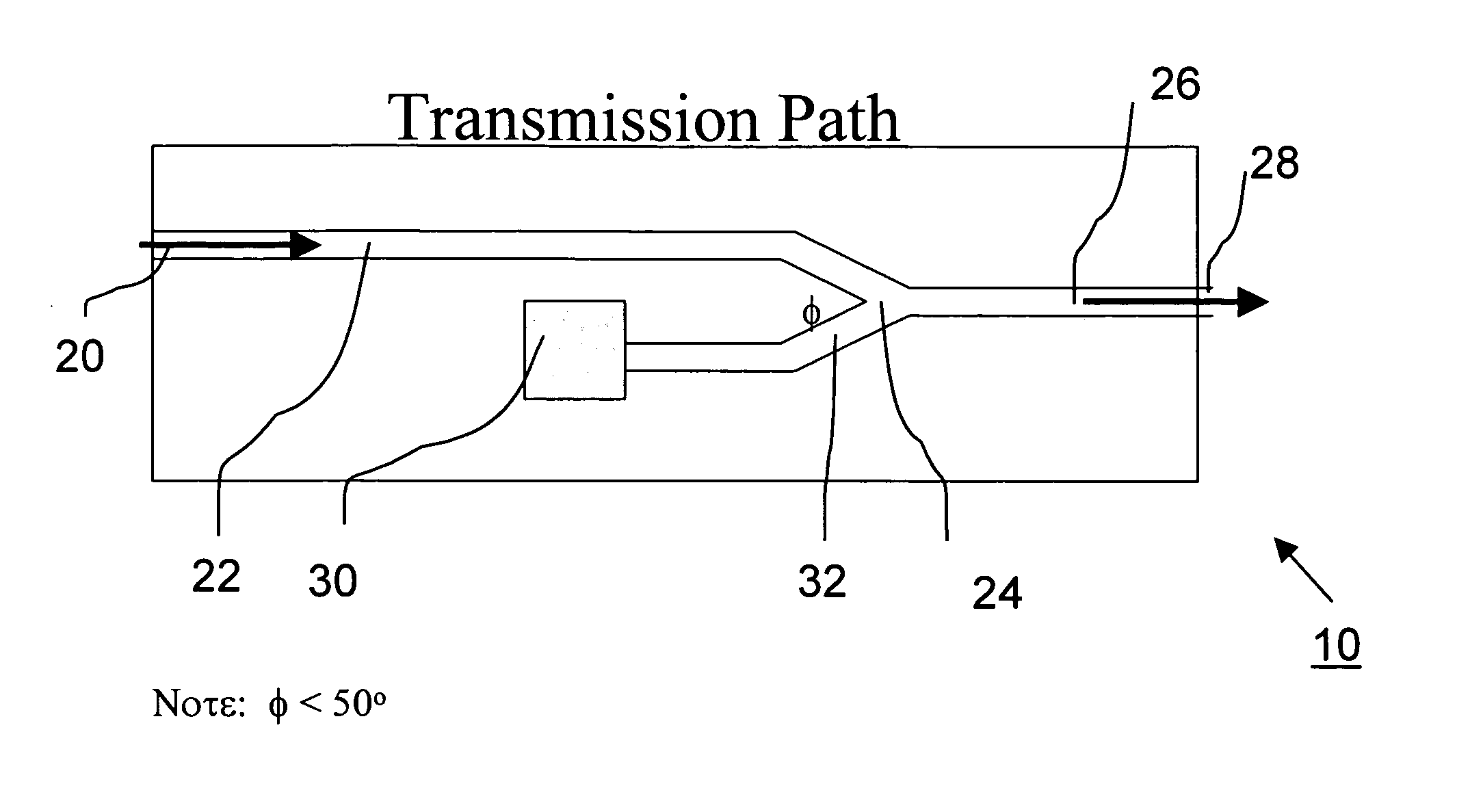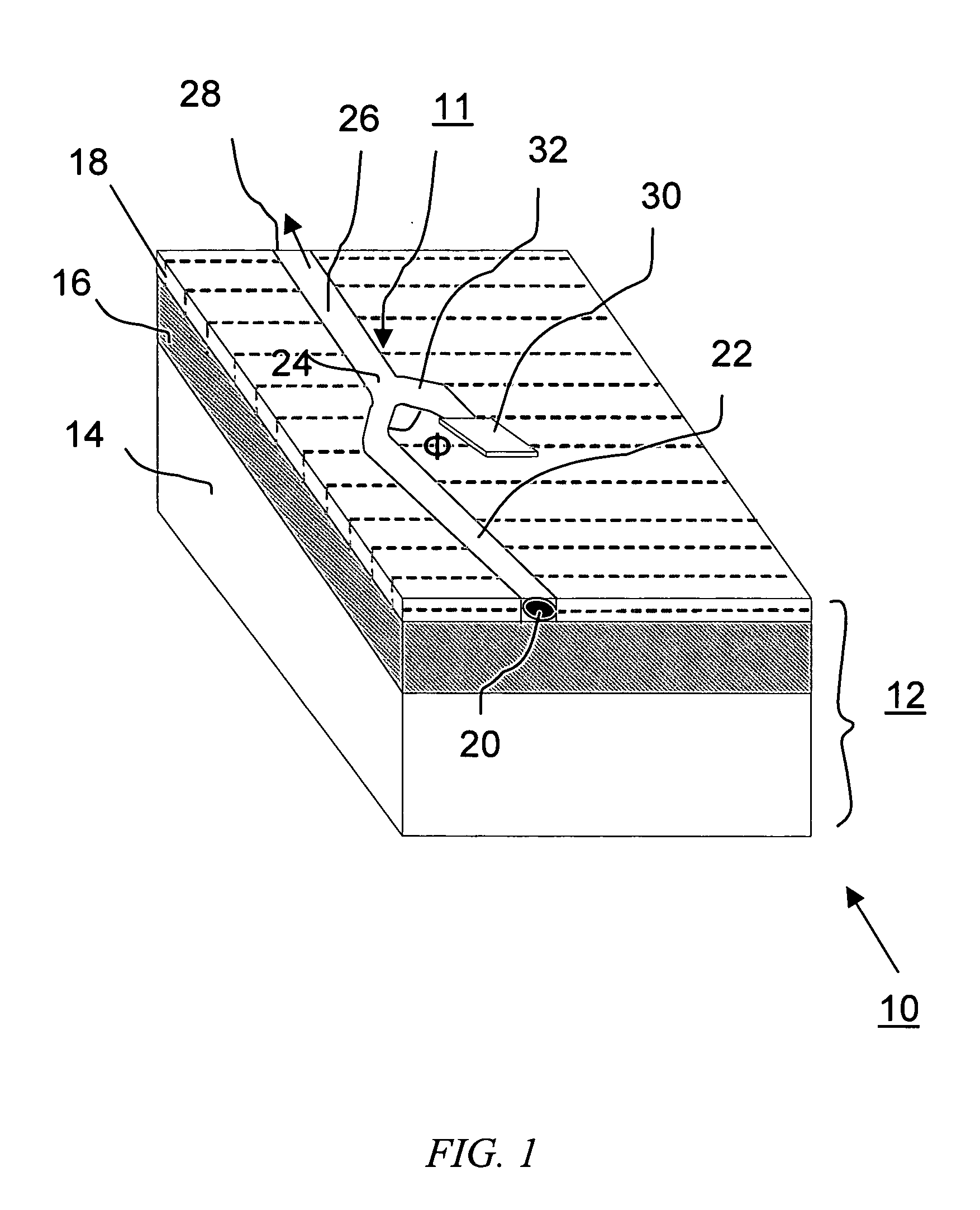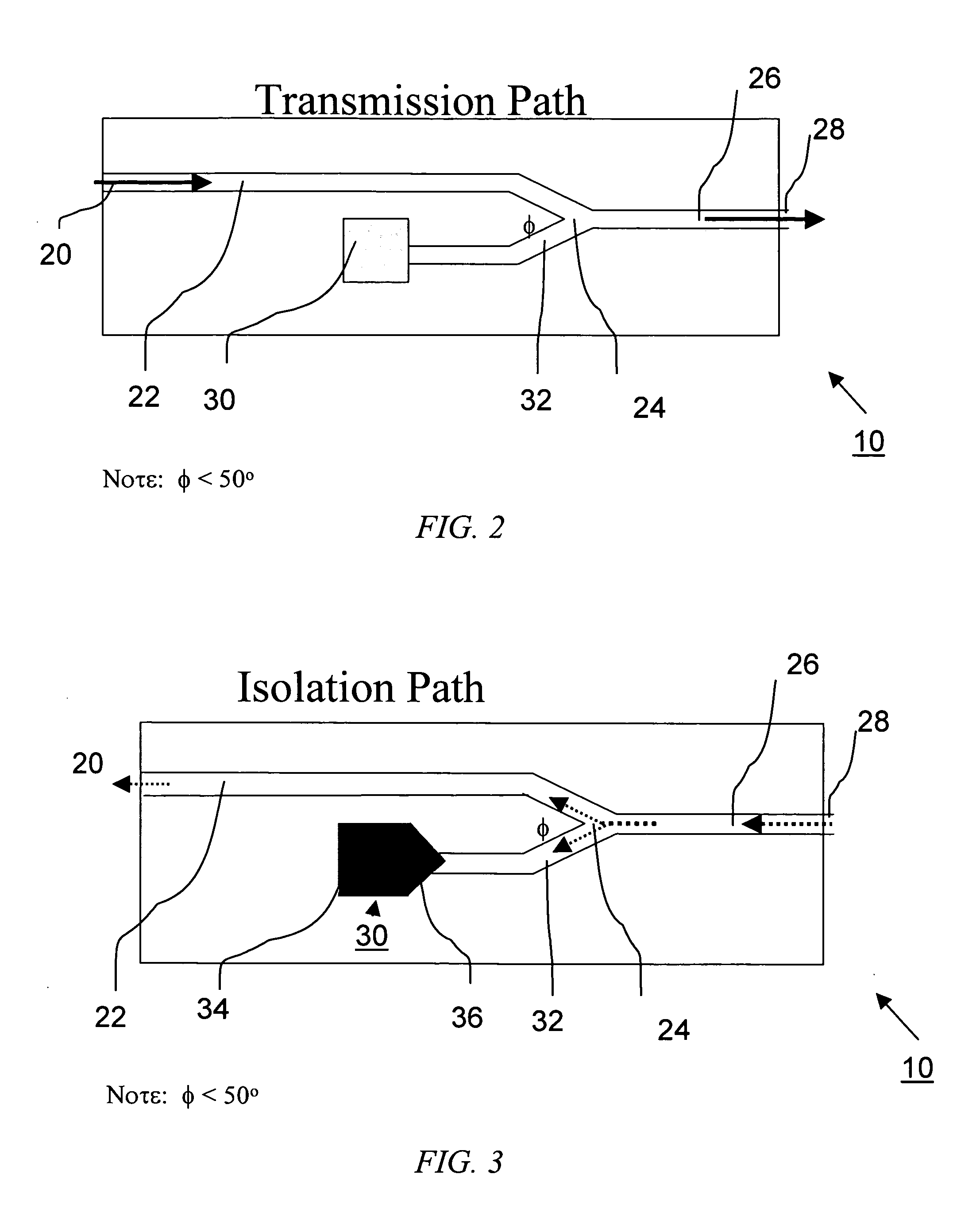Planar waveguide optical isolator in thin silicon-on-isolator (SOI) structure
- Summary
- Abstract
- Description
- Claims
- Application Information
AI Technical Summary
Benefits of technology
Problems solved by technology
Method used
Image
Examples
Embodiment Construction
[0032]FIG. 1 contains an isometric view of an exemplary SOI-based planar optical isolator 10 formed in accordance with the present invention. Optical isolator 10 is formed within a silicon-on-insulator (SOI) structure 12 comprising a silicon substrate 14, an insulating dielectric layer 16 (usually comprising SiO2) and a surface single crystal silicon layer 18 (typically referred to in the art as the “SOI layer”). In most cases, SOI layer 18 will comprise a thickness of less than one micron. In some cases, the surface silicon layer may comprise a “strained” silicon layer, where the lattice structure of the silicon has been modified. Although not particularly illustrated in FIG. 1, or any of the following drawings, it is to be understood that in actual use, the associated opto-electronic components are formed within the same SOI structure 12, thus forming an efficient, monolithic optical system arrangement.
[0033] In accordance with the present invention, optical isolator 10 includes ...
PUM
 Login to View More
Login to View More Abstract
Description
Claims
Application Information
 Login to View More
Login to View More - R&D
- Intellectual Property
- Life Sciences
- Materials
- Tech Scout
- Unparalleled Data Quality
- Higher Quality Content
- 60% Fewer Hallucinations
Browse by: Latest US Patents, China's latest patents, Technical Efficacy Thesaurus, Application Domain, Technology Topic, Popular Technical Reports.
© 2025 PatSnap. All rights reserved.Legal|Privacy policy|Modern Slavery Act Transparency Statement|Sitemap|About US| Contact US: help@patsnap.com



